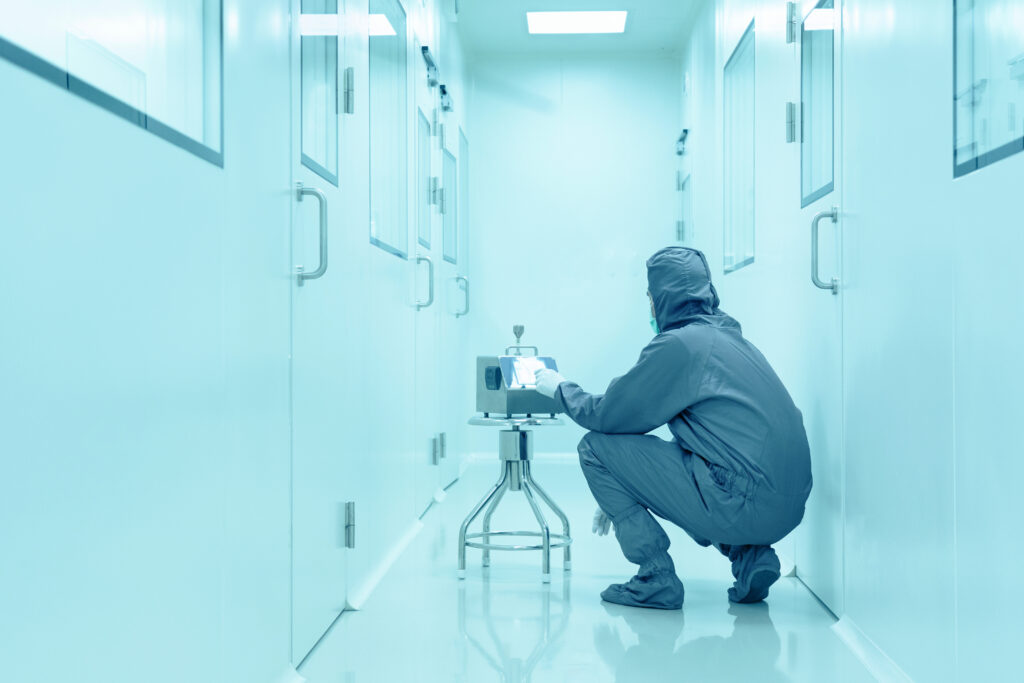The EMS of the future
As you probably know, the pharmaceutical industry is subject to very strict regulations.
Why? Well, because it has to guarantee the safety and efficacy of its products of course!
One of the important aspects of these regulations, which concerns us, is the obligation to implement an environmental monitoring system like our Mirrhia EMS. Regulatory agencies such as the Food and Drug Administration (FDA) and the European Medicines Agency (EMA) expect pharmaceutical companies to be able to prove in all circumstances that their facilities (cleanrooms, labs, storage facilities, etc.) comply with the environmental conditions required to obtain regulatory approval for their products.
And that’s where an EMS like ours comes in to help!
For some construction or expansion projects, our clients engage with engineering offices. We have indeed noticed, in the last few years, that more and more engineering offices call upon Mirrhia to propose an environmental monitoring solution to their clients and to create increasingly robust, detailed, demanding, and even more restrictive specifications.
I’ll tell you right away, with my legendary enthusiasm (and that of my boss too), Mirrhia is clearly at the top of the EMS/FMS solutions available on the market (FMS stands for Facility Management System). And when it comes to checking off the boxes of these famous specifications, Mirrhia is doing pretty well.
Mirrhia leading the EMS/FMS market
But why has Mirrhia’s environmental monitoring solution risen to the top of the list of industry players?
It’s easy and simple to answer. I’ll take a stab at it.
Mirrhia is an independent solution.
For years, our teams have been working to maintain this independence. Our products are constantly evolving while keeping this singularity. This may sound like a cliché to you, but it’s clearly an advantage. Mirrhia can interface with almost any equipment (from temperature to particle counters) from almost any brand. Isn’t that beautiful? I find it so beautiful that it makes my heart go boom boom. But more seriously, that’s what makes our solution one of the most flexible on the market.
Mirrhia is installed in over 3500 controlled environments worldwide.
When I say controlled environments, I mean cleanrooms, storage areas, laboratories, filling lines, blood or tissue banks, clinical pharmacies, isolation and surgery rooms, fertility centers, etc. There are many more, but I’m running out of breath here.
Mirrhia complies with the strictest regulatory standards.
Our EMS/FMS was originally designed for the pharmaceutical industry, which means that it complies with certain regulations and standards, such as GMP, GAMP5, FDA Annex 11 and 21 CFR Part 11, etc. In short, it is a considerable asset in terms of safety and efficiency that appeals many sectors beyond the pharmaceutical industry. I’m thinking here of the healthcare sector (we are currently equipping several hospitals, either entirely or partially), the agri-food industry, cosmetics, art (yes, environmental monitoring in museums exists), and more.
Mirrhia listens to the market.
Mirrhia builds its solutions by involving its clients as much as possible, allowing us to stay close to market expectations. It’s common for Mirrhia clients to participate in defining needs, reviewing functional analyses, or providing feedback on highly anticipated new features. Does that interest you? Call me maybe?
EMS/FMS market trends
Being at the top of the list of top EMS/FMS providers is good, but staying there by meeting tomorrow’s needs is even better!
Hold on tight, I’m going to bring some sparkle into your life!
From a legal standpoint
Annex 1 and the contamination control strategy.
EMS (Environmental Monitoring System) is an essential component of the contamination control strategy in sterile manufacturing facilities. It is essential for compliance with Annex 1 as it allows pharmaceutical manufacturers to monitor air, surfaces, and personnel to detect viable and non-viable particles and microorganisms. Monitoring ensures that your environment remains within the required limits for particle count, microbial contamination, and environmental parameters such as temperature, humidity, and pressure differentials.
The trend is to strengthen this contamination control strategy. Controlling contamination is essential for the production of sterile products. This is obviously logical since contamination can have serious consequences, such as product recalls, adverse events, and patients harm. And of course, nobody wants that. EMS is an integral part of the CCS (Contamination Control Strategy) as it provides data to identify any potential source of contamination and to take prompt corrective actions.
The audit trail
But what is this thing? The audit trail is a crucial feature of environmental monitoring systems as it records all activities and events related to environmental monitoring. The audit trail captures all relevant data, including the person who performed the monitoring, the time it was performed, and the obtained results. It is a requirement in the context of sterile drug manufacturing.
The importance of audit trail in an EMS like Mirrhia is due to several reasons that I will explain to you right now:
- First, the audit trail ensures traceability and accountability of monitoring activities. It allows pharmaceutical manufacturers to demonstrate to regulatory authorities that monitoring has been conducted in accordance with required standards and guidelines.
- Second, the audit trail helps identify potential problems or anomalies in the surveillance data. It detects any unauthorized or inappropriate actions that may compromise the integrity of monitoring data. This contributes to ensuring the accuracy and reliability of monitoring data, which is essential for making informed decisions about environmental conditions in the pharmaceutical facility. And that’s beautiful!
- Finally, the audit trail is required by regulatory authorities such as the United States Food and Drug Administration (FDA) and the European Medicines Agency (EMA). These authorities require pharmaceutical manufacturers to maintain complete and accurate records of all activities related to pharmaceutical manufacturing, including environmental monitoring.
EMS as a self-sufficient and independent system
EMS is an essential element of quality control in the pharmaceutical industry. It is highly recommended that EMS be independent of building management systems (BMS) or supervisory control and data acquisition (SCADA) systems. Here is a list of several reasons why an EMS, such as Mirrhia, should be independent of BMS or SCADA systems:
The objective
The purpose of an EMS is to monitor environmental conditions in pharmaceutical facilities, while the objective of BMS or SCADA systems is to control and manage the mechanical and electrical systems of the building. The combination of EMS and any of these systems could cause confusion and make it difficult to identify and diagnose problems with either system.
Data accuracy and integrity
EMS requires accurate and reliable data to ensure that environmental conditions remain within the required limits. BMS or SCADA systems are designed for real-time control, and they may prioritize real-time control over data accuracy and reliability. This can lead to inaccurate and unreliable data generated for the environmental monitoring part, compromising the integrity of data and the quality control system.
Regulatory compliance
Regulatory authorities require pharmaceutical companies to demonstrate that their environmental monitoring system is independent and capable of accurately and reliably monitoring environmental conditions. Combining EMS with BMS or SCADA systems could make it difficult to demonstrate compliance with regulatory requirements.
Cybersecurity
Separating and isolating EMS from other systems such as BMS can help reduce the risk of cyber-attacks and protect the integrity of the quality control system.
If you want to learn more about the differences between these different systems, I invite you to read the article I wrote: BMS vs EMS or SCADA & EMS – Why distinguish them?
From a technical standpoint
Environmental monitoring systems have evolved significantly in recent years to adapt to the increasing complexity of pharmaceutical manufacturing processes and regulatory requirements. Here are some trends regarding the technical aspects of EMS in the pharma industry:
Increasing use of wireless technology
Data loggers, those cute little electronic devices used to record environmental data, are being increasingly used because they are more robust than before and can be easily deployed and configured to collect data automatically. Nowadays, wireless deployment can be combined with wired or RF options. In any case, with Mirrhia, it is totally possible!
Easy deployment
The deployment of EMS systems is becoming easier. With Mirrhia, it’s like a piece of cake, but of course, if you show up with a project of 5000 measurement points, it might be challenging to set up your EMS in just one hour. Many systems are now designed to be plug-and-play (or almost) and all-in-one. For example, with Mirrhia, on-site installation and configuration are minimal. Factory Acceptance Tests (FAT) are already performed. All documentation and qualification/validation protocols (IQ & OQ) are provided. In short, we do everything we can to significantly reduce downtime, a real challenge in our industry, which improves overall efficiency. It’s magical!
Multi-device compatibility
The trend towards multi-device compatibility is another important aspect of modern EMS systems. EMS systems, like Mirrhia, now support a wide range of devices, including HMIs, desktop computers, laptops, tablets, and smartphones. This allows you to access your system from anywhere, at any time, using the device of your choice. In fact, Mirrhia, thanks to its fully web-based graphical interface, only requires a browser that is already available on your device to be deployed.
From a functional point of view
Are you still with me? Did I lose you in the midst of my cute little data loggers? Alright then, let’s dive into the functional advancements that the market is expecting.
Configuring a mode for your measuring point
Some EMS systems, like Mirrhia, have an absolutely fantastic feature: the ability to set a mode. So, what does that mean, exactly? Well, in Mirrhia, you can determine that your measuring point is in service, which is the most common case, indicating that your measurement is active. You can also determine that your measurement is in calibration mode or in inactive mode.
Now, you might ask, “Yes… So what?” Well, the advantage of this is that you can define different system behaviors based on the mode you’re in.
For example, you can stop data acquisition for a measuring point in inactive mode or adjust your thresholds to avoid unnecessary alarms during calibration mode.
Do you get the idea?
But here’s the power of our system: everything is traced. So, if one day you do an audit or need to examine what happened, or even for reporting purposes, you can prove that during a specific period, there were no alarms because you were in calibration or inactive mode, for instance. This makes investigation and diagnosis much easier.
Status of the room or area
Indeed, with Mirrhia, you can assign a status to your room or area, such as decontamination, cleaning, or standby mode (a idle mode, if you want).
The beauty of room status is that it will have a global impact on the system’s behavior, affecting all measuring points within the room or area. For example, you can determine that during the decontamination mode, all alarms are disabled.
Alarm type, alarm propagation, and alarm visualization on maps
Criticality management in the pharmaceutical industry is a major challenge, and we at Mirrhia understand it very well. I swear! You can create multiple alarm types based on criteria specific to your organization and business needs, including production requirements and, of course, criticality.
Since the dawn of time in Mirrhia, you can put a whole area in alarm. We call it propagation. For example, you can configure that when a measuring point in a specific zone (e.g., a high-risk area) triggers an alarm, the entire zone goes into alarm state.
What’s magical about Mirrhia is that you can visualize this through a map view of your installations. It’s powerful because you can navigate from one installation to another across the world and zoom in on one of your cleanrooms.
This allows you to quickly identify where alarms are triggered, no matter where you are. I always come back to the speed of investigation and diagnosis thanks to optimized alarm reporting.
Alarm management is a real challenge for operators of any facility. Therefore, we have designed an overview dashboard that significantly improves accessibility and efficiency in managing these alarms for each operator.
Predictive maintenance
Predictive maintenance uses data analysis and machine learning from your system to predict when maintenance is needed. By analyzing environmental data collected by the EMS, predictive maintenance algorithms can detect patterns that indicate when equipment is likely to fail, allowing maintenance to be scheduled before a failure occurs. This reduces downtime and prevents equipment failures that could lead to contamination.
Predictive maintenance helps anticipate deviations in your measuring points. It involves collecting data on the system’s behavior over a given period and identifying trends.
If the system detects deviations from the expected behavior, it triggers an alert or notification indicating that a problem is developing. The operator can then investigate the issue and take proactive measures to resolve it before it becomes a major problem that could cause downtime or damage to your system.
More information
- Do you have specific requirements?
- Do you want to discuss your project or a client’s project with us ?
- Do you want to discover Mirrhia ?
A Minute With Marie
Want to see the series “A Minute with Marie” on the EMS of the future?
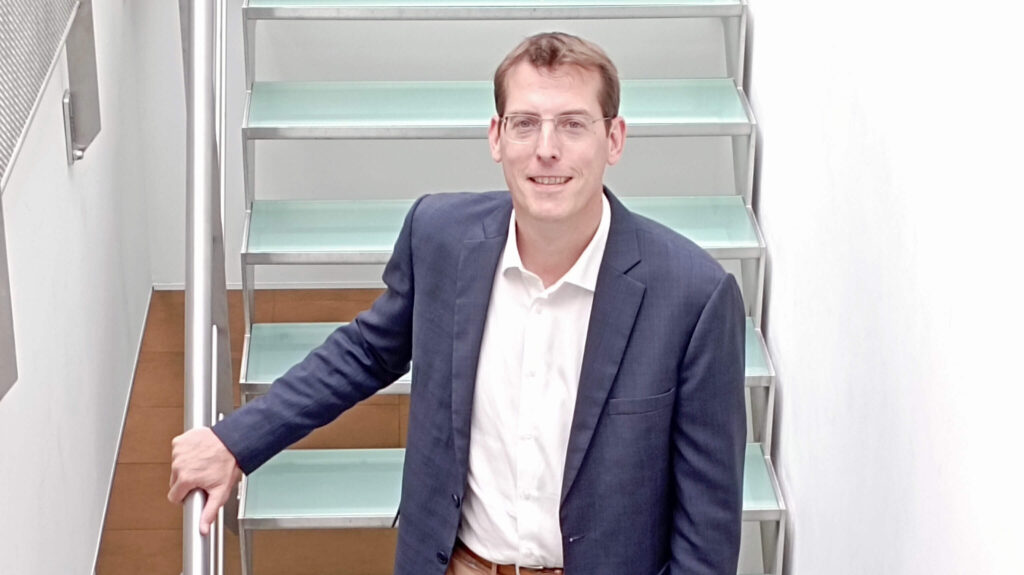
Arrival of Etienne Van den Bogaert as Managing Director
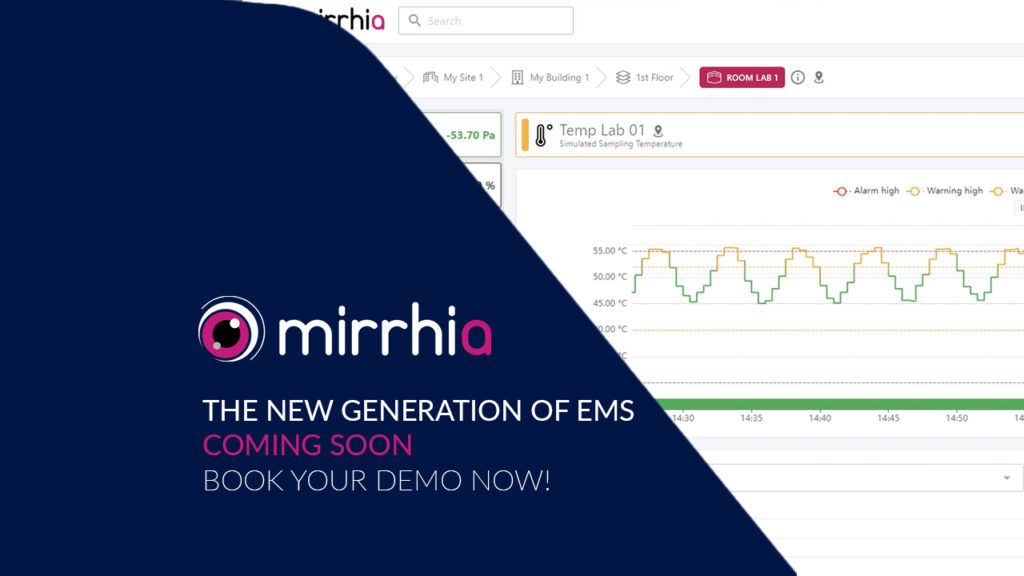
Mirrhia 2.4 is coming

Data Integrity in The Pharmaceutical Industry

Laborama 2024
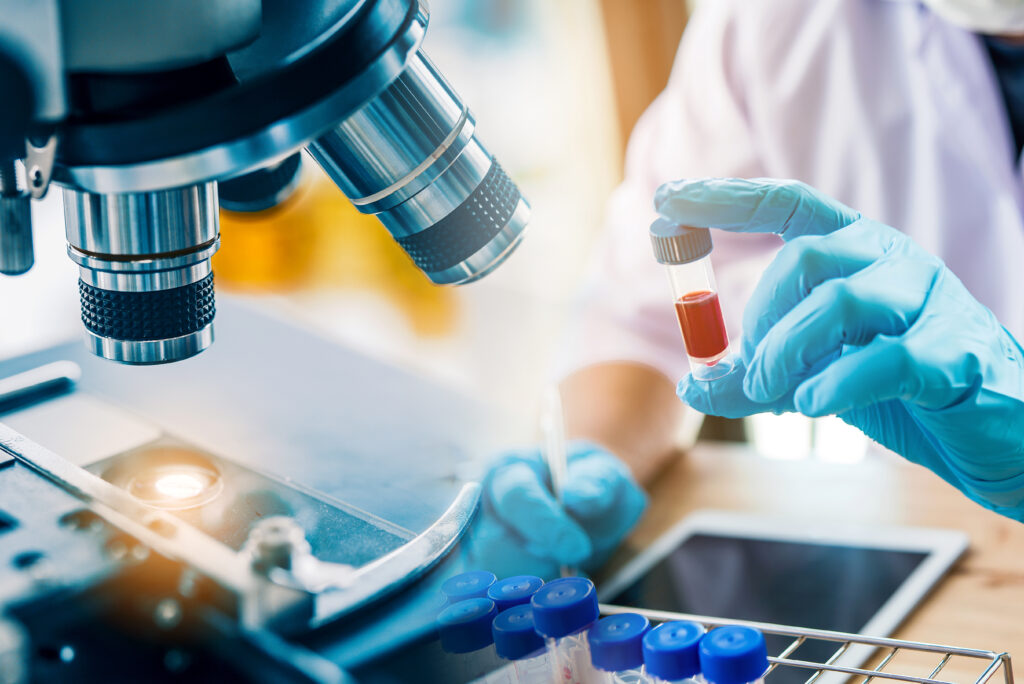
Laboratory Temperature & Humidity Monitoring
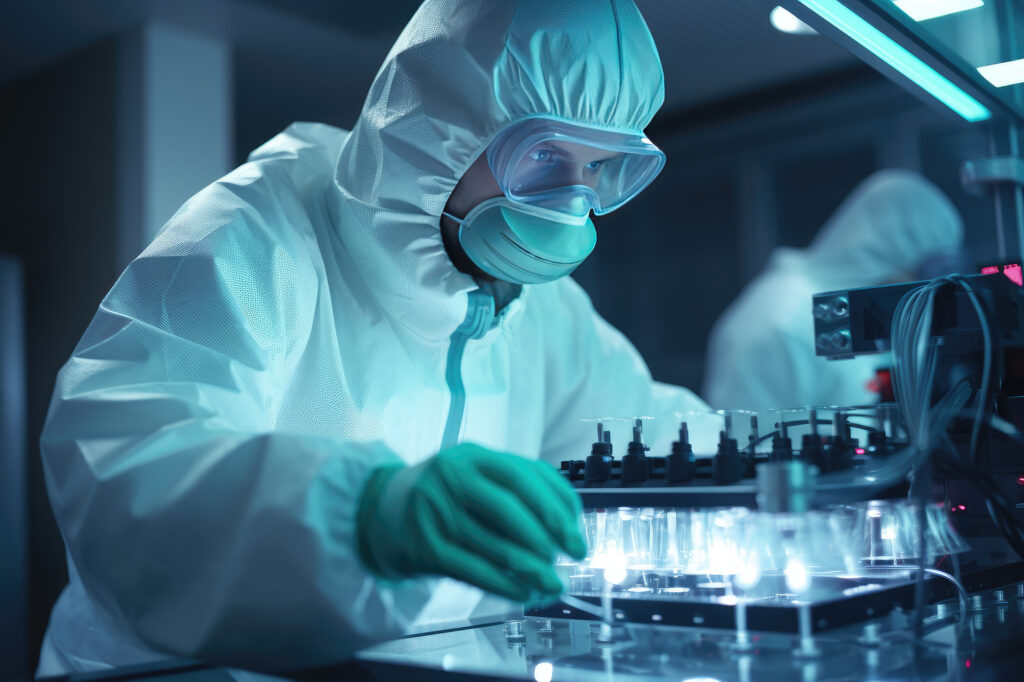
Particle Counters | Case Studies & EMS in Pharma
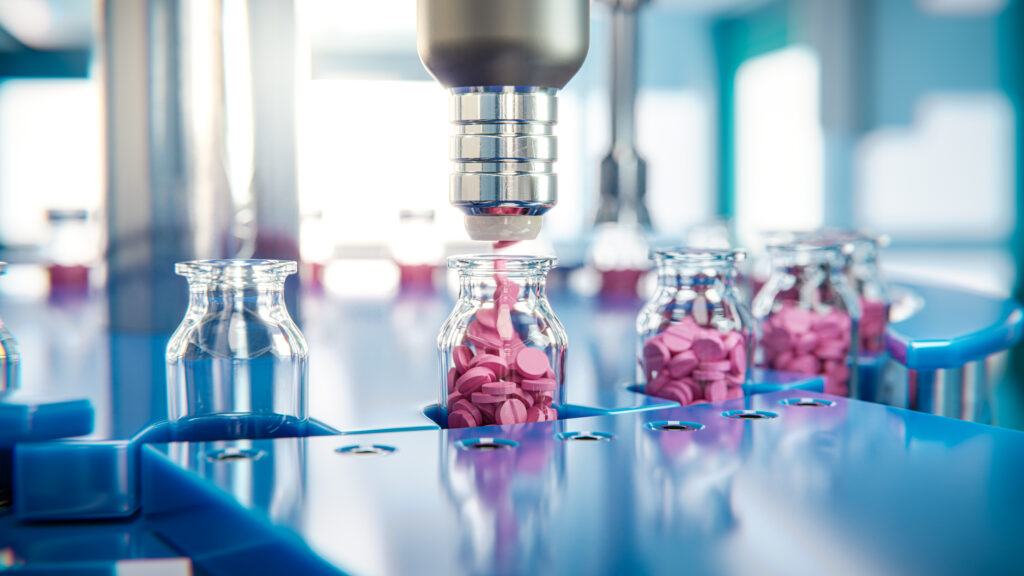
Particle Counting for Pharma
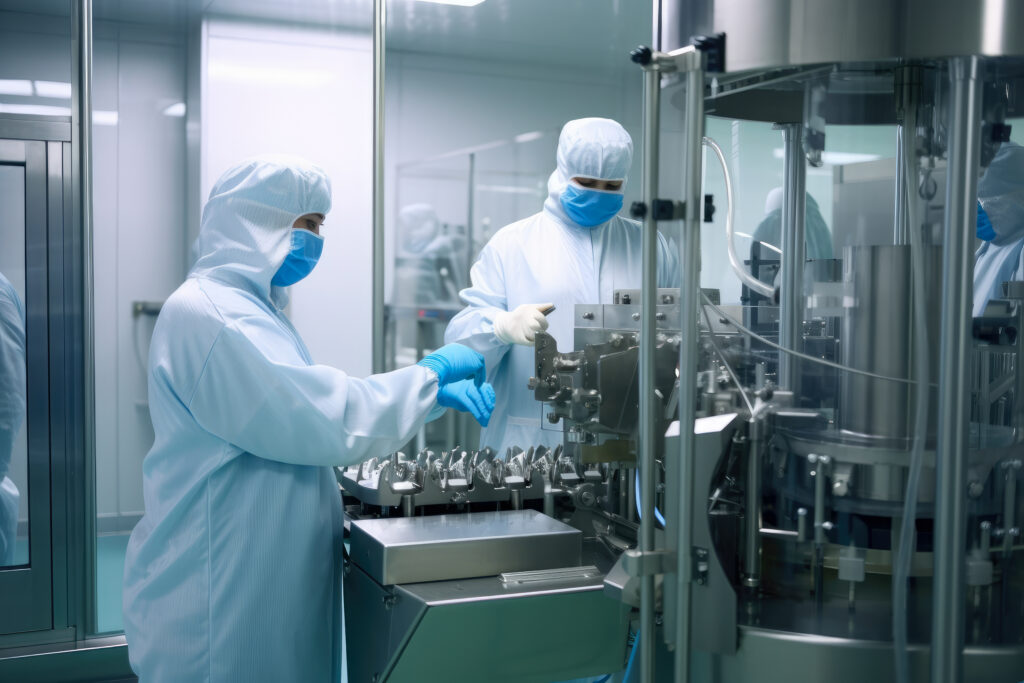
Particle Counting – Quality and Compliance
